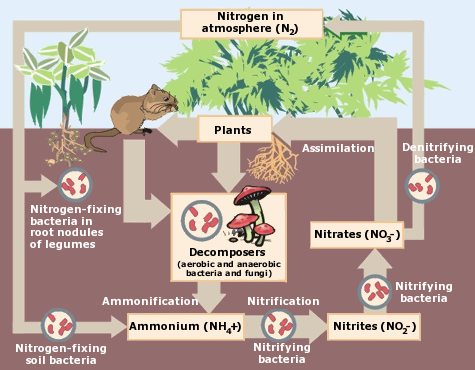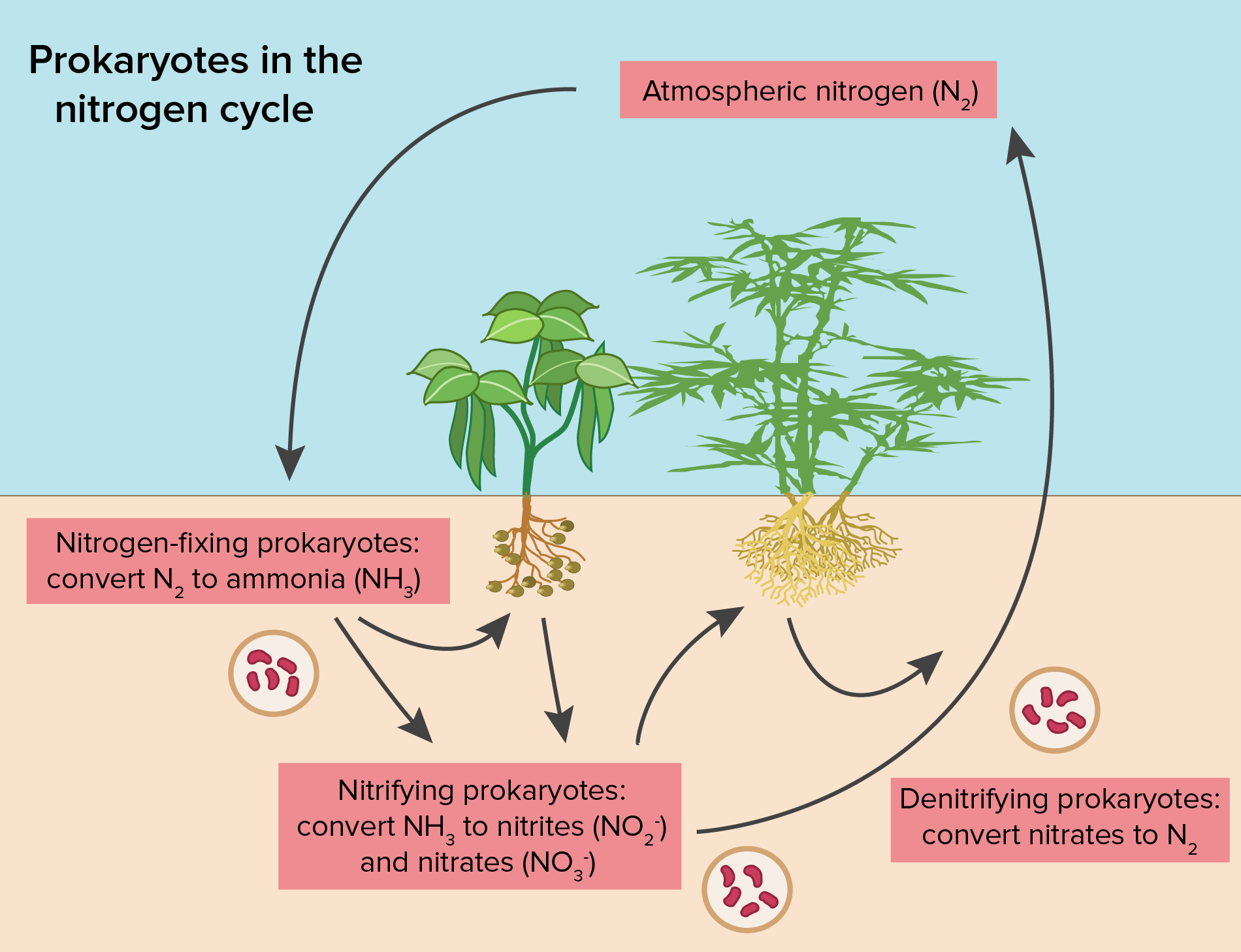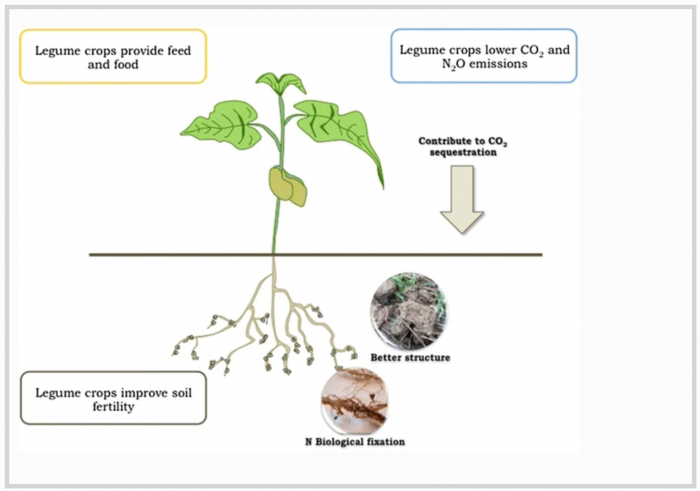They have a symbiotic nitrogen fixation relationship with nitrogen fixing Rhizobia bacteria that form root nodules in the plant and live there. I hope this helps.

How Do Plants Get Their Nitrogen From The Air Science Questions With Surprising Answers
Nitrogen fixation natural and synthetic is essential for all forms of life because nitrogen is required to biosynthesize basic building blocks of plants animals and other life forms eg nucleotides for DNA and RNA and amino acids for proteins.

. Nitrogen fixing bacteria take atmospheric nitrogen N2 and convert it to Ammonium. Therefore nitrogen fixation is essential for agriculture and the manufacture of fertilizer. When nitrogen is absorbed by the soil different bacteria help it to change states so it can be absorbed by plants.
Then these nitrogen compounds are used for the production of proteins and other compounds in the cell. Nitrogen may be fixed via natural or synthetic processes. Nitrogen salt is secreted by the insectivorous plants.
Among forage plants the group of plants known as legumes plants in the botanical family Fabaceae are well known for being. Click to see full answer. Nitrogen fixation is the process of converting the atmospheric nitrogen N 2 into biological state nitrogen.
It is defined as an anaerobic without oxygen process that catalyzes the reduction of atmospheric nitrogen N 2 into ammonia NH 3. Nitrogen gas N2 diffuses into the soil from the atmosphere and species of bacteria convert this nitrogen to ammonium ions NH4 which can be used by plants. This helps to fertilize the soilfixation efficiency in soil is dependent on many factors including the legume and air and soil conditionsother nitrogen fixing families include a tropical genus in the family cannabaceae which are able to interact with.
Nitrogen-fixing soil organisms rhizobium associated with the roots of legumes capture atmospheric nitrogen and make it available to the plant. When plants die fungi and other bacteria in the soil help to decompose the material and return the nitrogen to the soil system. Under nitrogen-limiting conditions capable plants form a symbiotic relationship with a host-specific strain of bacteria known a.
Within the nodules the bacteria convert free nitrogen to ammonia which the host plant utilizes for its development. Nitrogen is a paramount element for plants since it is a core component of many plant structures and for both their internal and external metabolic processes. Leguminous crop plants have nitrogen-fixing bacteria in nodules on their roots.
Usually nitrogen fixation takes in the root nodules of leguminous plants which inhabit certain bacteria Rhizobium. Non symbiotic nitrogen fixing by bacteria Azospirilum also occurs in cases like rice roots. Prokaryotic micro organisms that can fix nitrogen are called diazotrophs.
It is the first process of making nitrogen available for plants. Only a select group of plants is able to obtain N this way with the help of soil microorganisms. It gets mixed in the soil and is again used by the green plants to prepare their food.
Lightning provides energy to react water H 2 O and nitrogen gas N 2 to form nitrates NO 3 and ammonia NH 3. Older leaves have a. On soils with a low concentration of nitrate ions leguminous crops often grow better than other types of crop.
Produce protein amino acids named protein DNA RNA. Animals then get their nitrogen from the plants. There are two key methods of natural nitrogen fixation.
Nitrogen to ammonia NH3 ammonium 2. Symptoms of nitrogen deficiency Plants lacking nitrogen have very slow growth and look weak and stunted. True nitrogen fixation converts atmospheric nitrogen into nitrogen that can be used by plants.
Nitrogen salt provides the green plants nutrition protein minerals etc. Through symbiotic nitrogen fixation the plant benefits from using an endless source of nitrogen from the atmosphere. Legumes such as clover and lupins are often grown by farmers because they have nodules on their roots that contain nitrogen-fixing bacteria.
Nitrogen fixation is a chemical process by which molecular nitrogen N 2 with a strong triple covalent bond in the air is converted into ammonia NH 3 or related nitrogenous compounds typically in soil or aquatic systems but also in industryAtmospheric nitrogen is molecular dinitrogen a relatively nonreactive molecule that is metabolically useless to all but a few. So we have to fix it by filtering out dangerous bacteria in the water and other dangerous stuff before being able to actually drink it. The insectivorous plants eat insects etc to get their extra nutrition.
View the full answer Transcribed image text. While bacteria fix nitrogen in the soil plants provide them food. Nitrifying bacteria then convert this to NO2 and then NO3 nitrates.
Legume Root Nodules Nitrogen Fixation by Lightning Another process that helps in nitrogen fixation is lightning. Fixation - Fixation is the first step in the process of making nitrogen usable by plants. These nitrates can then be taken up by plants.
The process simultaneously contributes to soil fertility because the plant root system leaves behind some of the biologically available nitrogen. The plants absorb the usable nitrogen compounds from the soil through their roots. Expert Answer 6 The Root nodules are found on the roots of plants like legumes that forms a symbiosis with nitrogen-fixing bacteria.
Nitrogen-fixing bacteria play a crucial role in fixing the atmospheric nitrogen into nitrogen compounds that can be used by plants. Theres plenty of water on Earth but very few is actually drinkable at least for humans. Processes of the Nitrogen Cycle.
Some nitrogen fixing bacteria Rhizobia have a symbiotic relationship with plants. The Rhizobia fix N2 for the plant in exchange for carbon sources from the plant. A very small amount of nitrogen is fixed by lightning or ultraviolet radiation which reacts with the nitrogen gas in the atmosphere to produce nitric oxide.
Biological nitrogen fixation BNF is the term used for a process in which nitrogen gas N 2 from the atmosphere is incorporated into the tissue of certain plants. The symbiotic nitrogen-fixing bacteria invade the root hairs of host plants where they multiply and stimulate the formation of root nodules enlargements of plant cells and bacteria in intimate association. They absorb nitrates from the soil into their roots.
Nitrogen fixation occurs naturally in the soil by nitrogen fixing bacteria. It is a natural phenomenon where the energy of lightning breaks and converts the non-absorbable form of nitrogen into a usable form. Plants are required to manufacture the complex molecules through metabolism activities to survive by use of minerals from the soil that contain nitrogen such as nitrate ions.
Rain and snow carry these compounds to the surface where plants use them. When the plant dies the fixed nitrogen is released making it available to other plants.

Permaculture Plant Guide Permaculture Plants The Plants That You Will Want Nitrogen Fixing Plants Nitrogen Fixation Permaculture

The Nitrogen Cycle Article Ecology Khan Academy

Native Legumes And Nitrogen Fixers To Plant In 2020 Granite Seed

31 3a Nitrogen Fixation Root And Bacteria Interactions Biology Libretexts
0 Comments